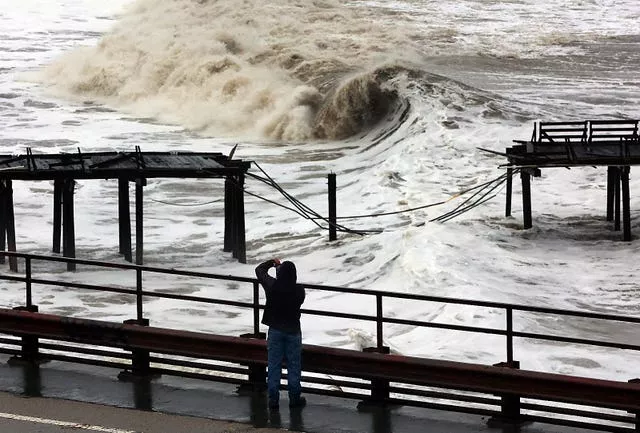Waves are getting bigger and surf at least 13ft (about four metres) tall is becoming more common off California’s coast as the planet warms, according to innovative new research that tracked the increasing height from historical data gathered over the past 90 years.
Oceanographer Peter Bromirski, from the Scripps Institution of Oceanography, used the unusual method of analysing seismic records dating back to 1931 to measure the change in wave height.
When waves ricochet off the shore, they collide with incoming waves and cause a ripple of energy through the seafloor that can be picked up by seismographs designed to detect earthquakes.
The greater the impact, the taller the wave is.
Until now, scientists relied on a network of buoys from the National Oceanic and Atmospheric Administration that collect data on wave height along US coasts, but that data along the California coast only went back to 1980.
“Until I stumbled upon this data set, it was almost impossible to make that comparison with any kind of reliability,” Mr Bromirski said.
To go back further, Mr Bromirski gathered a team of undergraduate students to analyse daily seismic readings covering decades of winters.
It was a slow, painstaking process that took years and involved digitising drums of paper records.
But he said it was important in learning how things have changed over nearly a century along California’s coast.
They found that average winter wave heights have grown by as much as a foot since 1970, when global warming is believed to have begun accelerating.
Swells at least 13ft tall are also happening a lot more often, occurring at least twice as often between 1996 and 2016 than from 1949 to 1969.
Mr Bromirski was also surprised to find extended periods of exceptionally low wave heights prior to about 1970 and none of those periods since.

“Erosion, coastal flooding, damage to coastal infrastructure is, you know, something that we’re seeing more frequently than in the past,” Mr Bromirski said.
“And, you know, combined with sea level rise, bigger waves mean that is going to happen more often.”
Changes in waves are showing up in other ways, too.
“There’s about twice as many big wave events since 1970 as there was prior to 1970,” Mr Bromirski said.
The study, published in the Journal of Geophysical Research: Oceans, adds to the evidence that climate change is causing massive shifts in the world’s oceans.
Other studies have shown waves are not only getting taller but also more powerful.
Damage from intense storms and massive surf is already playing out.
This winter, California’s severe storms and giant waves collapsed bluffs, damaged piers and flooded parts of the state’s picturesque Highway 1.
Mr Bromirski said that is a harbinger of the future.
Scientists say global warming may even be accelerating, ushering in even bigger waves.
As sea levels rise and storms intensify, bigger waves will cause more flooding in coastal communities, erode away beaches, trigger landslides and destabilise remaining bluffs, Mr Bromirski said.
These issues are of particular concern along the California coast, where sea cliffs have already started crumbling and brought down homes in recent years.
Because of sea level rise, projections at the end of the 21st century indicate even moderate waves might cause damage comparable to that of extreme weather events, according to the study.
Oceanographer Gary Griggs, at the University of California Santa Cruz, said while a jump of a foot in wave height over more than 50 years is not huge, the findings are consistent with what scientists know is happening to the world’s oceans as they warm: they are becoming increasingly violent due to more extreme storms and wreaking havoc along coasts.
Mr Griggs, who was not involved in the research, said it adds to growing scientific data showing how fast the world is warming and how quickly seas are rising.
“We know hurricanes are more intense and last longer, and now we’ve got, you know, waves increasing in power. So those are all consistent,” he said.
“The challenge … is sort of how to really respond to that.”







